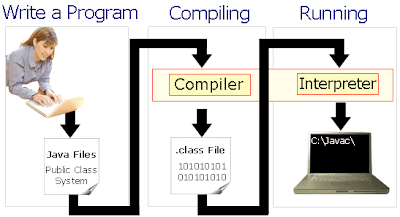Java Interpreter
We can run Java on most platforms provided a platform must has a Java interpreter. That is why Java applications are platform independent. Java interpreter translates the Java bytecode into the code that can be understood by the Operating System.
Basically, A Java interpreter is a software that implements the Java virtual machine and runs Java applications. As the Java compiler compiles the source code into the Java bytecode, the same way the Java interpreter translates the Java bytecode into the code that can be understood by the Operating System.
When a Java interpreter is installed on any platform that means it is JVM (Java virtual machine) enabled platform. It (Java Interpreter) performs all of the activities of the Java run-time system. It loads Java class files and interprets the compiled byte-code. You would be glad to know that some web browsers like Netscape and the Internet Explorer are Java enabled. This means that these browsers contain Java interpreter. With the help of this Java interpreter we download the Applets from the Internet or an intranet to run within a web browser.
The interpreter also serves as a specialized compiler in an implementation that supports dynamic or “just in time,” compilation which turns Java byte-code into native machine instructions. Throughout Java programming, we’ll build both, the standalone Java programs and applets. Sun’s Java interpreter is called java.
Lets learn how to start a standalone application with it. Load an initial class and specify it. Some options can also be specified to the interpreter, and any command-line arguments needed for the application as well:
% java [interpreter options] class name [program arguments] The class should be specified as a fully qualified class name including the class package, if any.
Note : Moreover, we don’t include the .class file extension. Here are a few examples:
% java animals.birds.BigBird
% java test
Once the class is loaded, java follows a C-like convention and searches for the class that contains a method called main(). If it finds an appropriate main() method, the interpreter starts the application by executing that method. From there, the application starts additional threads, reference other classes, and create its user interface.
Now, lets see how to go about an Applet. Although Java applet is a compiled Java code, the Java interpreter can’t directly run them because they are used as part of a larger applications. For this we use Java Applet Viewer. It is a command line program to run Java applets. It is included in the SDK. It helps you to test an applet before you run it in a browser.
The Figure below shows the working of Java Interpreter:

No comments:
Post a Comment